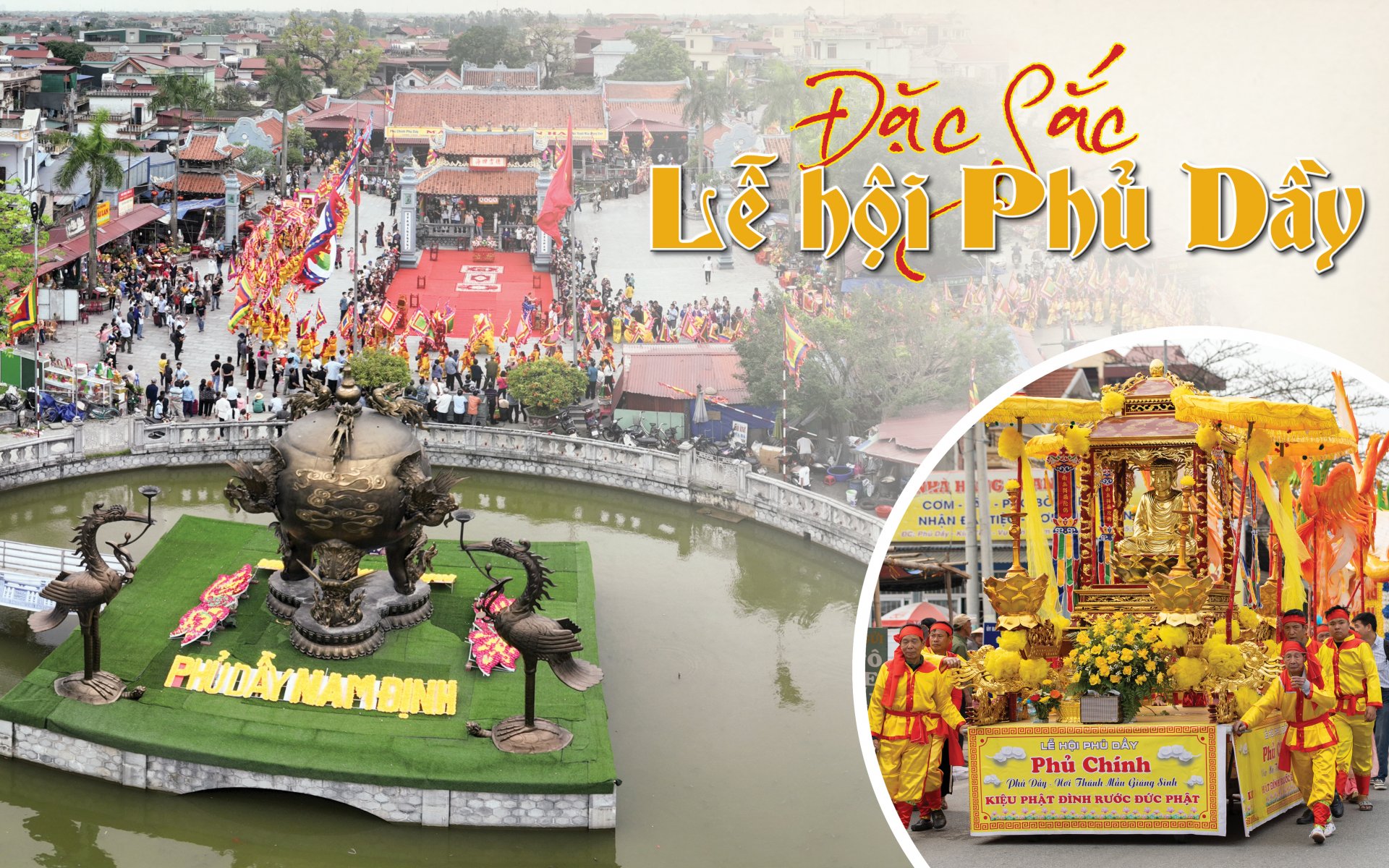 |
The Phu Day relic complex in Kim Thai commune (Vu Ban) is considered one of the largest Mother Goddess worship centers in our country. Every third lunar month, the sacred land of Kim Thai bustles with the atmosphere of the Phu Day Festival with many rich folk art activities, attracting a large number of pilgrims and worshipers.
March is considered the “Mother’s death anniversary month” – the occasion to commemorate the death of Holy Mother Lieu Hanh, the powerful mother goddess honored by the people as a symbol of the desire for freedom, filial piety, patriotism and benevolence. Along the winding roads between the green rice fields of Kim Thai commune, visitors from all over can encounter more than 20 different relics. Each point is associated with the legend of Mother’s merit, from the place of “descending to earth” to the place of “ascension to heaven”, forming a diverse system of relics such as Phu Chinh Tien Huong, Phu Van Cat, Lang Chua Lieu… The gathering of these spiritual architectures contributes to honoring Nam Dinh as one of the major religious centers of the country. Notably, Phu Day Festival has both religious significance and reflects the rich folk cultural life of the rice-growing agricultural residents of the Red River Delta.
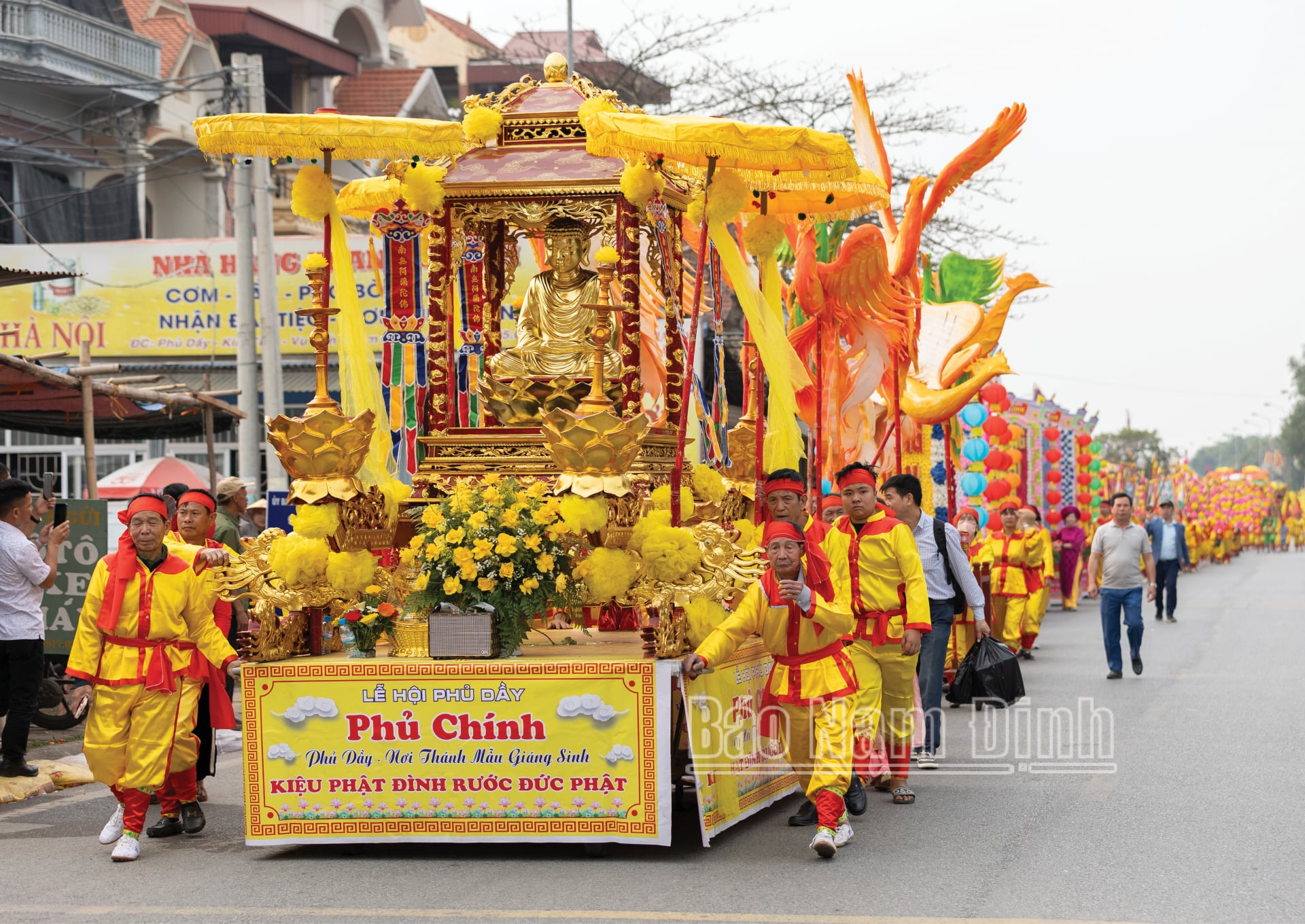 |
| Procession of palanquin at Phu Chinh Tien Huong. |
From the first days of the third lunar month, the entire Kim Thai commune was bustling with the sound of gongs and drums, colorful festival flags, shimmering lanterns, and crowds of people. Many tourists chose to stay in the village and neighboring areas to immerse themselves in the entire festival. Walking on the village roads, everyone could feel the fragrant scent of young rice, mixed with incense from the palace, temples, and pagodas. Each house here seemed to open its doors to welcome guests, showing hospitality, which is a traditional beauty of the people of Nam Dinh. For more than a week (from the 1st to the 10th of the third lunar month), many rituals of the Mother Goddess worship were solemnly held. Rituals such as the "moc duc" water procession (also known as the ritual of bathing the statue of the saint), torch procession, sutra procession, flower-bearing festival... were interspersed with art competitions and folk games. In many ceremonies, the procession of the sutras, the torch-lit procession and the flower curtain (pulling the letters) are considered three special “highlights”, gathering a large number of participants and attracting the attention of visitors from all over. The procession of the sutras is intended to represent the harmonious connection between the Mother Goddess worship and Buddhism. This is also an opportunity for people to pay their respects, pray for the Mother Goddess to bless them and seek peace of mind. Long lines of people in traditional costumes of bright red, yellow and green, accompanied by trumpets, drums, flags, parasols, etc., follow each other along the streets.
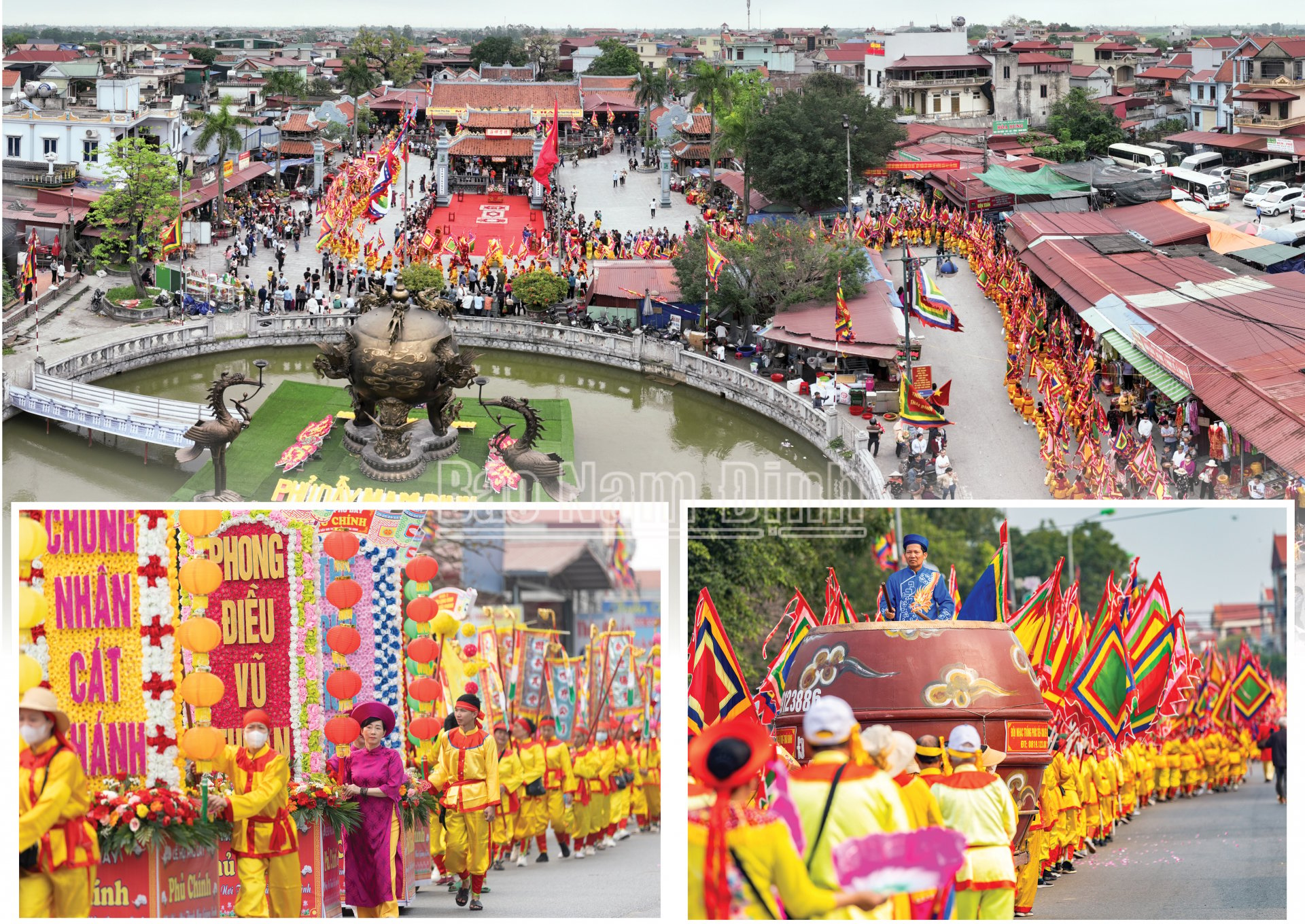 |
| View of the procession returning to Tien Huong Palace. |
The torchlight procession brings splendid and sparkling colors at night. At Phu Chinh Tien Huong, when the night falls, the sacred fire is lit from the sacred place in the forbidden palace, then handed over to the "warriors" who are tasked with keeping the fire going. From an initial fire, thousands of torches flare up one after another, forming a giant, winding "fire strip", symbolizing the shape of a dragon. Leading the procession are dragon and lion dances; followed by a large dragon model decorated with bright lights, illuminating the entire countryside. The fire symbolizes the strength and light of faith, spreading the desire for warmth, prosperity and peace. People from neighboring areas flock to watch like a festival, standing on both sides of the road, following the rhythm of the drums, witnessing the moment the countryside lights up in the festival night. Meanwhile, the hoa truong hoi (drawing letters) is a painting of collective performing art, originating from the ancient custom of the Ke Day laborers. According to legend, in the past, there was a girl named Ngo in Ke Day who was recruited into the Trinh Lord's palace and became the Princess. At that time, the Ke Day people were suffering from continuous natural disasters and floods, but they still had to go to the capital to build dikes according to the court's orders. Seeing the laborers working hard and lacking food, the Princess asked the Trinh Lord to give them more salary and then let them return to their hometowns to take care of the local dikes. Overjoyed, before returning, the group stopped by Phu Day to thank the Mother Goddess. According to custom, they arranged hoes and shovels to form letters to express their gratitude. Since then, the letter-pulling festival has become an indispensable part of Phu Day. Nowadays, people use long sticks wrapped in colorful paper, with chicken feathers tied to the ends of the sticks, forming a formation of several hundred people, following the commands of the "flag general", "flag commander" and the beat of the drum to create Chinese characters: "Thanh Cung Van Tue", "Thien Ha Thai Binh", "Quoc Thai Dan An"... Once the letters are arranged, the senior judges will review and score them, then continue to arrange other letters. The whole space is open, full of excitement and enthusiasm, continuing the tradition of "pulling letters" for centuries.
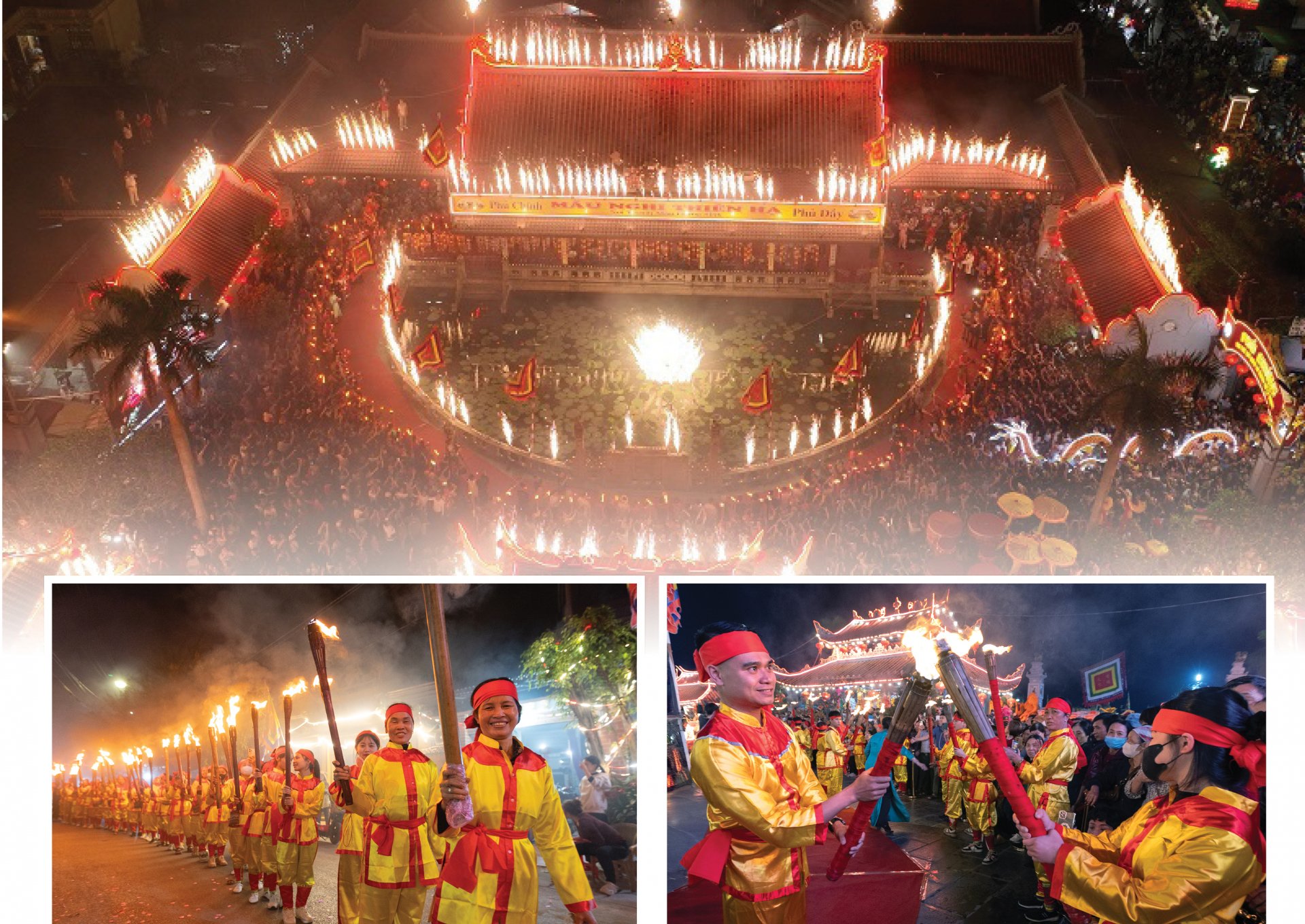 |
| Torch procession at Tien Huong Palace. |
Indispensable in the Phu Day Festival is the ritual of the spirit mediumship and singing - a quintessential expression in the practice of Mother Goddess worship. Pilgrims to Phu Chinh Tien Huong and Phu Van Cat cannot help but be captivated by the shimmering spirit mediums, each layer of costume changing corresponding to each saint descending to the altar. The gentle singing voice evokes sacred emotions, leading listeners back to their roots. The harmony of drums, clappers, moon lutes, two-stringed fiddles and the singing voice creates a sacred atmosphere. Through each spirit mediumship, viewers can contemplate the spiritual beauty and see the traditional cultural identity of the nation. The festivals become even more diverse thanks to competitions and folk games: human chess, dragon dance, lion dance, martial arts, wrestling, rice cooking competitions... All create a vibrant atmosphere like an extended village festival. In human chess, young men and women play the role of "chess pieces", wearing hats and shirts of different colors. Every step, every blow is performed vividly and gracefully by the “chess piece”. In martial arts and wrestling, wrestlers wear belts and have strong legs, exciting the surrounding audience.
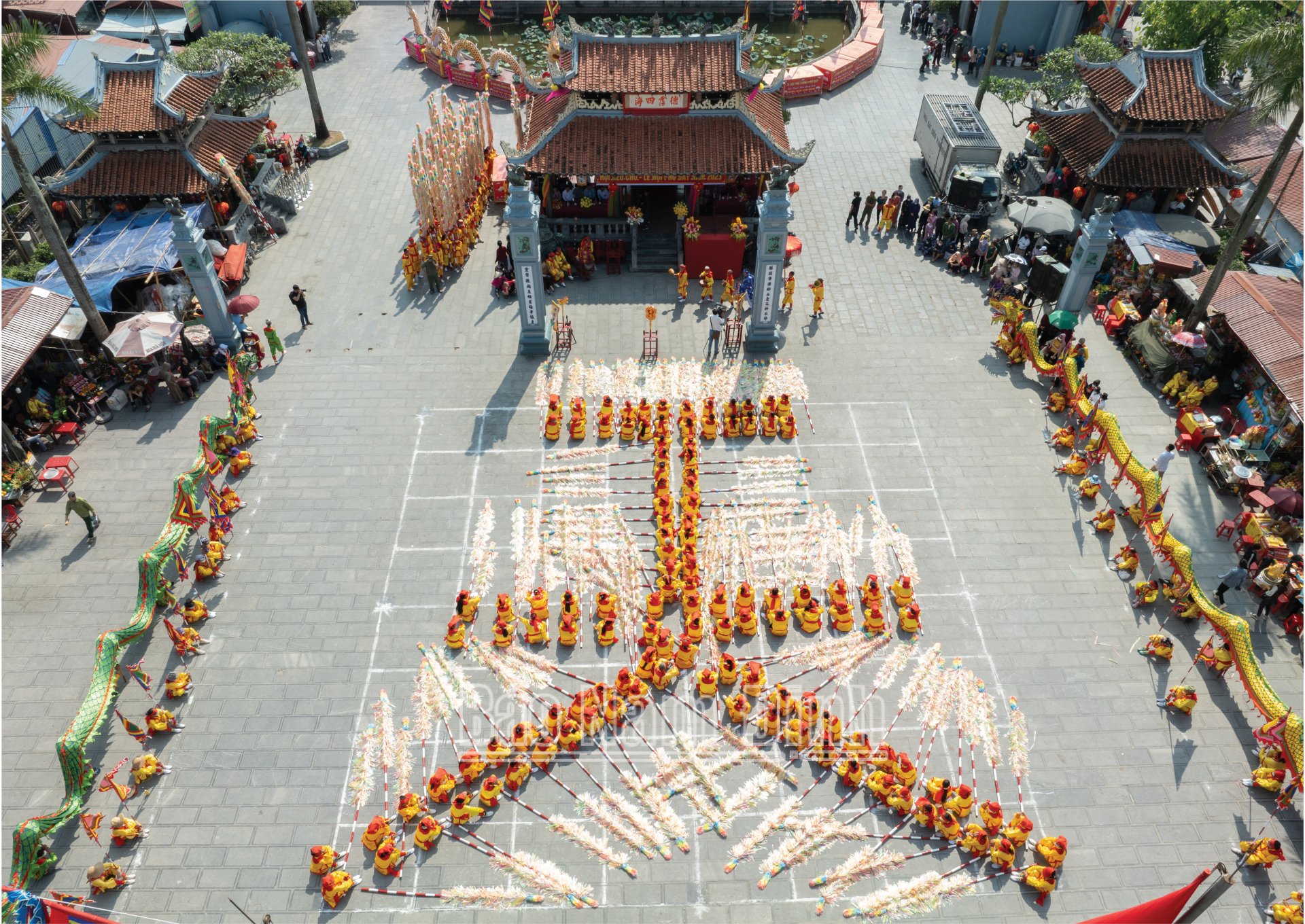 |
| Arrange the word "Thien" in Phu Day festival. |
In order to properly manage and organize the Phu Day Festival, the Kim Thai Commune government and the Festival Organizing Committee have each developed a specific plan to ensure security, order and traffic safety. According to Mr. Tran Khac Thieng, Chairman of the Kim Thai Commune People's Committee: "Many weeks before the festival, the authorities have deployed patrols, controls, and coordinated with religious establishments to maintain order, while creating favorable conditions for pilgrims. In terms of decoration and facilities, the Organizing Committee has set up a lighting system, hung lanterns, flags, arranged reasonable parking lots, reminded people and visitors to avoid littering..." Along with that, education and propaganda work on the meaning of heritage are also focused on. Many schools in Kim Thai Commune have integrated the theme of "Phu Day Festival" into extracurricular hours, inviting singing artists and elders who are knowledgeable about the history of the Holy Mother to share stories and religious practices. Students have access to a variety of information, from the legend of the Holy Mother, bronze statues, to architectural structures and sculptures in temples and shrines. Activities such as visiting relics, practicing singing, making paper torches, etc. nurture the love of the young generation for their homeland’s heritage, ensuring the sustainable transmission of cultural flows.
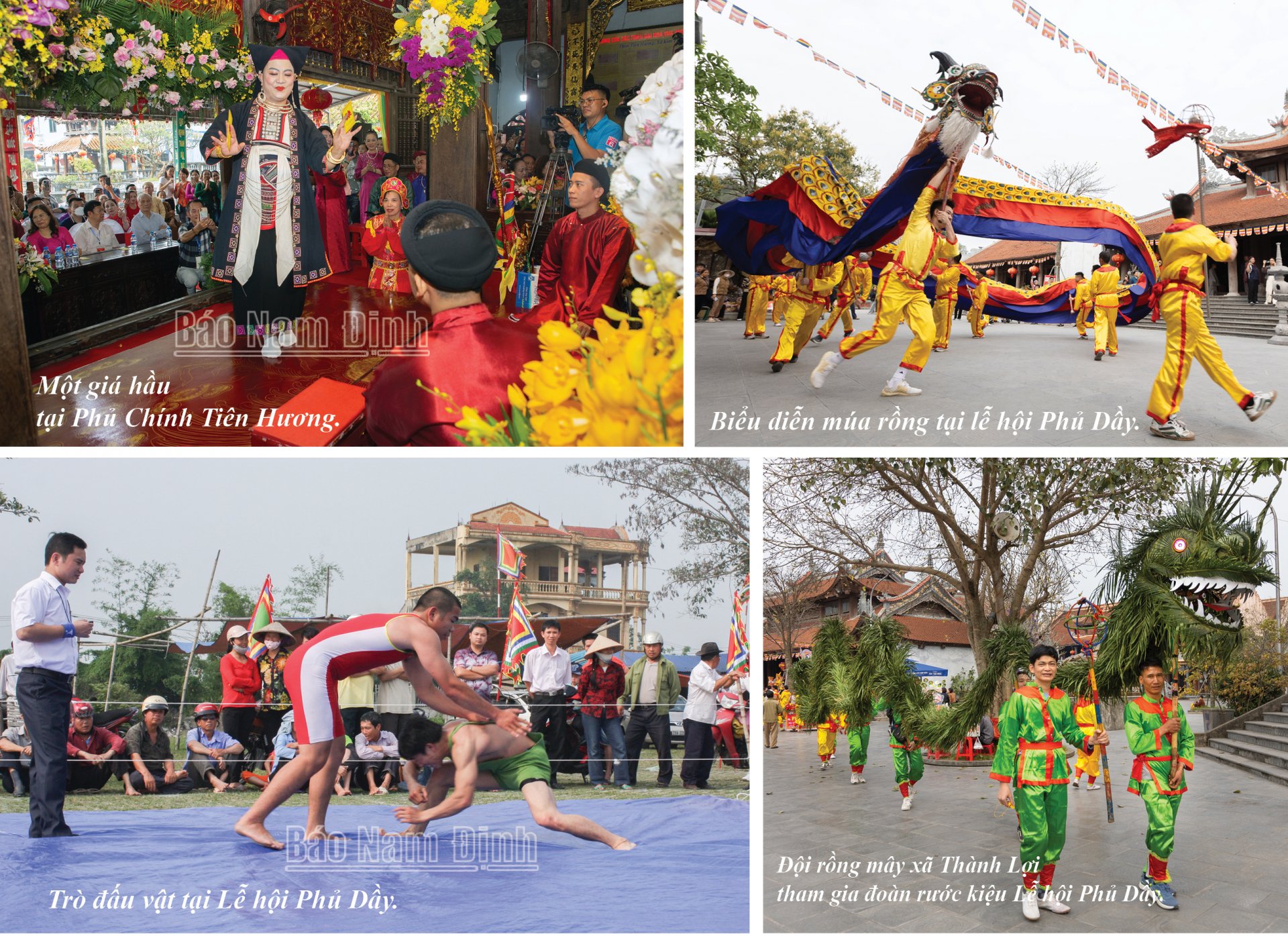 |
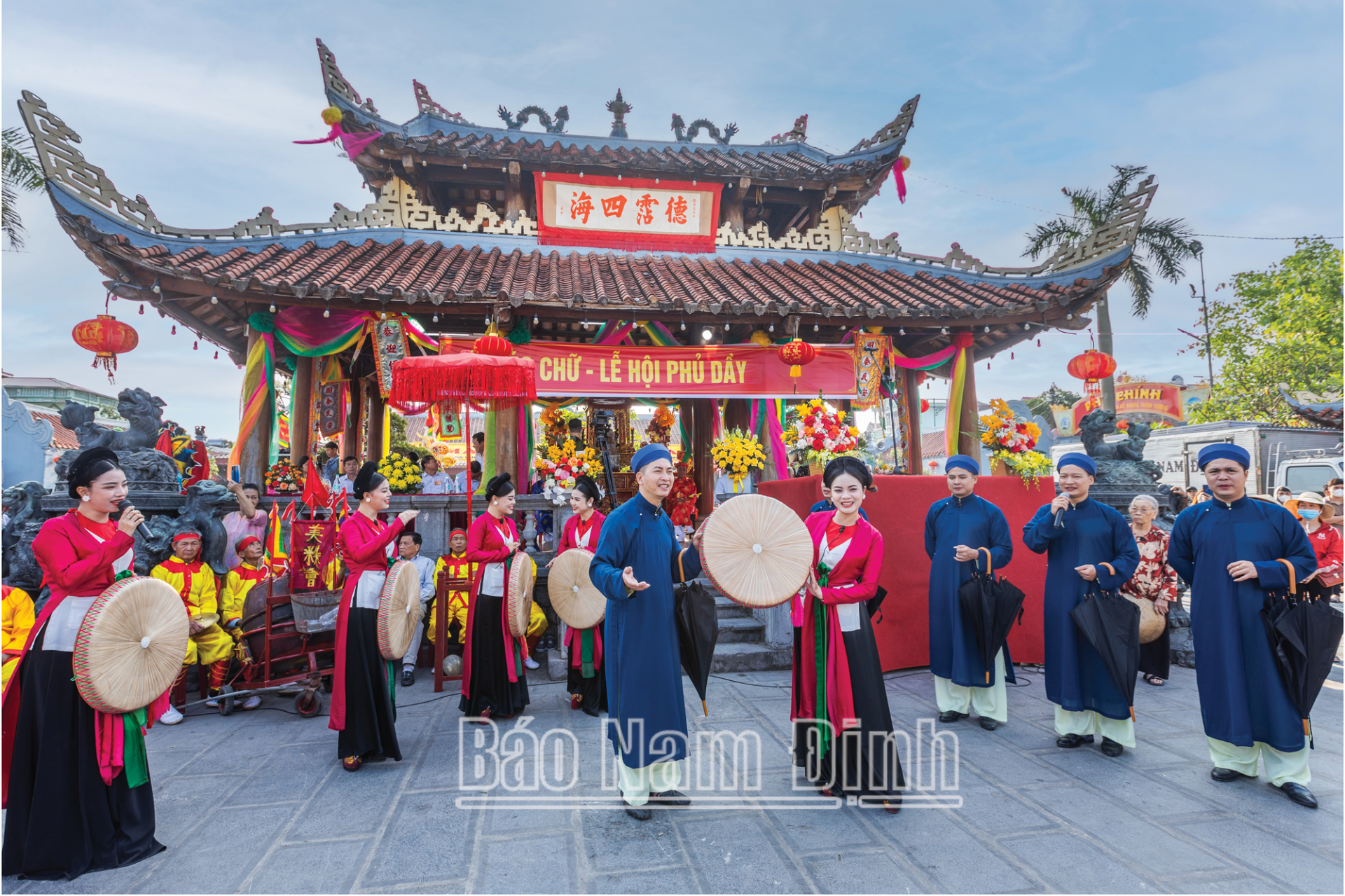 |
| Folk art performance at Phu Chinh Tien Huong. |
Phu Day Festival is not only a unique cultural and spiritual event associated with the Mother Goddess worship, but also an opportunity for the community to return to their roots and honor good traditional values. With a colorful festival space, solemn rituals, sophisticated art of spirit mediumship and singing, and exciting folk games, Phu Day has become a spring rendezvous for tens of thousands of visitors from all over the world. In the modern life, the festival still maintains its enduring vitality, contributing to spreading and preserving the cultural identity of the Vietnamese people./.
Article and photos: Viet Du - Phuong Anh
Source: https://baonamdinh.vn/multimedia/202504/dac-sac-le-hoi-phu-day-cb47736/


![[Photo] Chinese, Lao, and Cambodian troops participate in the parade to celebrate the 50th anniversary of the Liberation of the South and National Reunification Day](https://vphoto.vietnam.vn/thumb/1200x675/vietnam/resource/IMAGE/2025/4/30/30d2204b414549cfb5dc784544a72dee)

![[Photo] Performance of the Air Force Squadron at the 50th Anniversary of the Liberation of the South and National Reunification Day](https://vphoto.vietnam.vn/thumb/1200x675/vietnam/resource/IMAGE/2025/4/30/cb781ed625fc4774bb82982d31bead1e)

![[Photo] Cultural, sports and media bloc at the 50th Anniversary of Southern Liberation and National Reunification Day](https://vphoto.vietnam.vn/thumb/1200x675/vietnam/resource/IMAGE/2025/4/30/8a22f876e8d24890be2ae3d88c9b201c)


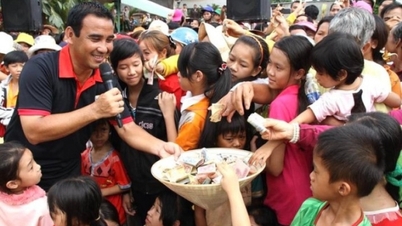
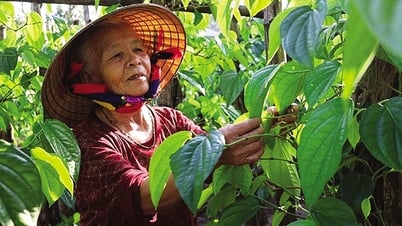

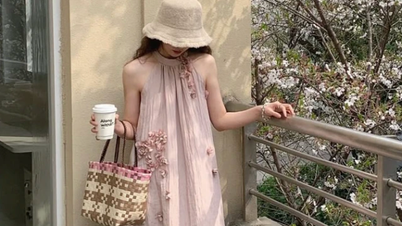








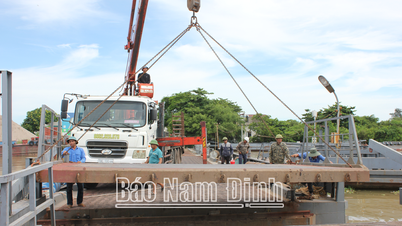

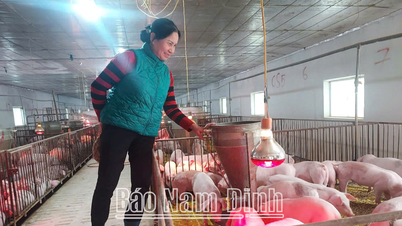
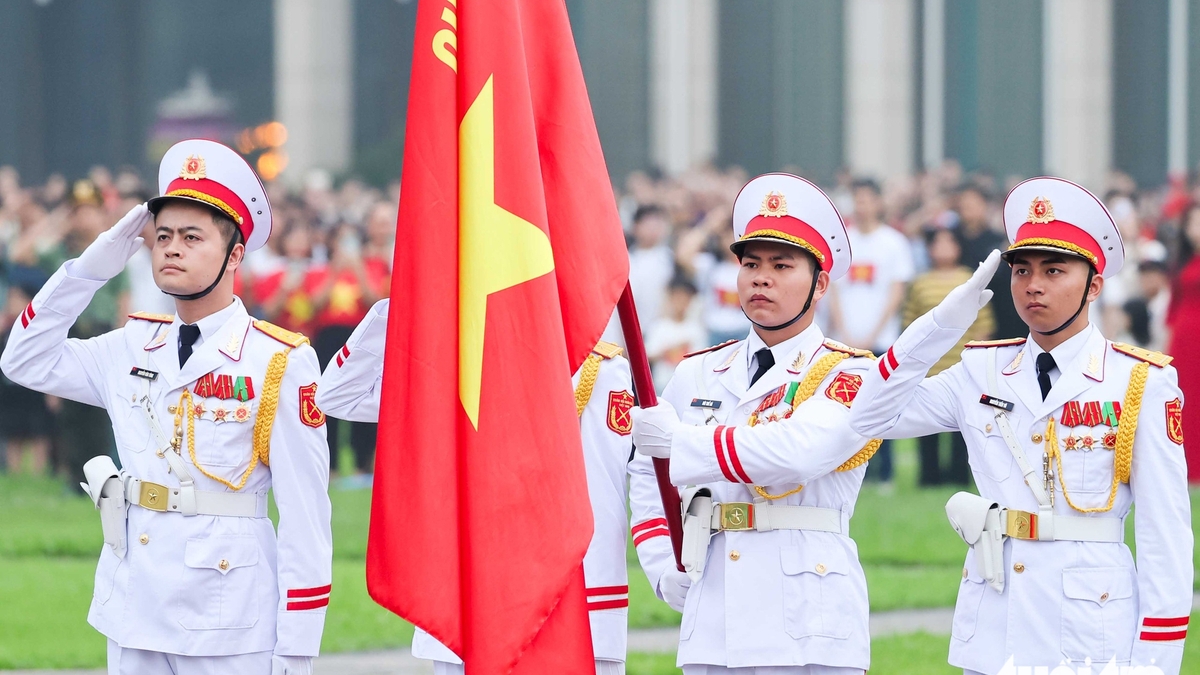













































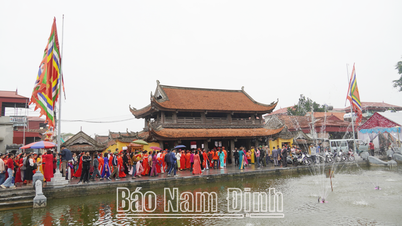




















Comment (0)